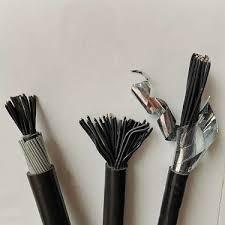1. What are the requirements for fire blocking of cable holes?
Answer: For larger cable penetration holes, such as the cable penetration floor, when using fireproof blocking materials to block, according to the actual situation, first apply four to six layers of fireproof paint on the cable surface, the length is about 1.5m below the hole, and then Refractory materials are processed into a board-supporting fire-proof blocking material with a certain strength to ensure that the blocking is firm and easy to disassemble when the aerial bundled cable 7870 standard is replaced. The blocking is dense and non-porous to effectively block the smoke and the fire.

2. What checks should be paid attention to before the torch is ignited?
Answer: The following inspections should be carried out:
(1) Whether the pump is leaking or leaking, whether the oil barrel and nozzle are leaking or leaking;
(2) Whether the amount of oil in the oil drum exceeds ¾ of the capacity of the oil drum, and whether the screw plug for refueling is tightened.
3. What should be paid attention to when using blowtorch?
Answer: (1) The maximum fuel injection volume of the blowtorch is ¾ of the volume of the fuel tank;
(2) The pressure should not be too high at the beginning, the flame can be used after being ignited from yellow to blue;
(3) There should be no combustibles around, and the air should circulate;
(4) Turn off the adjustment switch when it is out of service. After the fire is extinguished, slowly loosen the oil hole cover to release air. After the air is exhausted, loosen the adjustment switch, and then loosen the hole cover after it is completely cooled;
(5) Kerosene blowtorch and gasoline blowtorch should be used separately.

4. What is the purpose of manual hydraulic pliers? How to do it?
Answer: The connection of two wires is usually by inserting the two wire ends into a crimping tube made of the same material, squeezing several pits with crimping pliers to connect the wires together. When crimping, when the handle is lifted up, The plunger moves outwards, a vacuum is generated in the lower cavity of the oil inlet valve, and the oil in the oil tank enters the plunger cavity. When the handle is pressed down, the plunger moves inward. After the oil is pressurized, the oil inlet valve is closed and the oil outlet valve is opened, so that the oil pressure enters the hydraulic cylinder, pushing the piston and the male mold, and there is a crimping pipe between the male and female molds. When the depth of the crimped pit reaches a certain value, the oil return valve is opened and the piston automatically returns. After pressing one pit, move the pressing tongs and press the next one.
5. According to the difference of insulation and protective layer, what are the main types of commonly used low-voltage power cables?
Answer: (1) Oil-impregnated paper insulated lead-clad (or aluminum-clad) power cable;
(2) Non-drip oil-impregnated paper insulated power cable;
(3) PVC insulated and sheathed power cables;
(4) Cross-linked PVC insulated and PE sheathed power cable;
(5) Cross-linked PVC insulated and sheathed power cable;
(6) Rubber insulated power cables.
